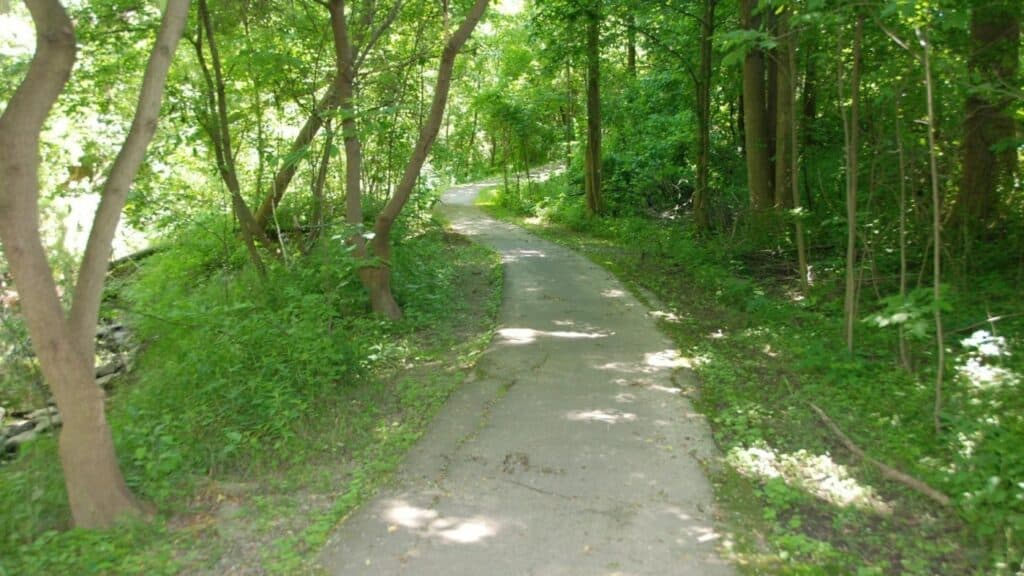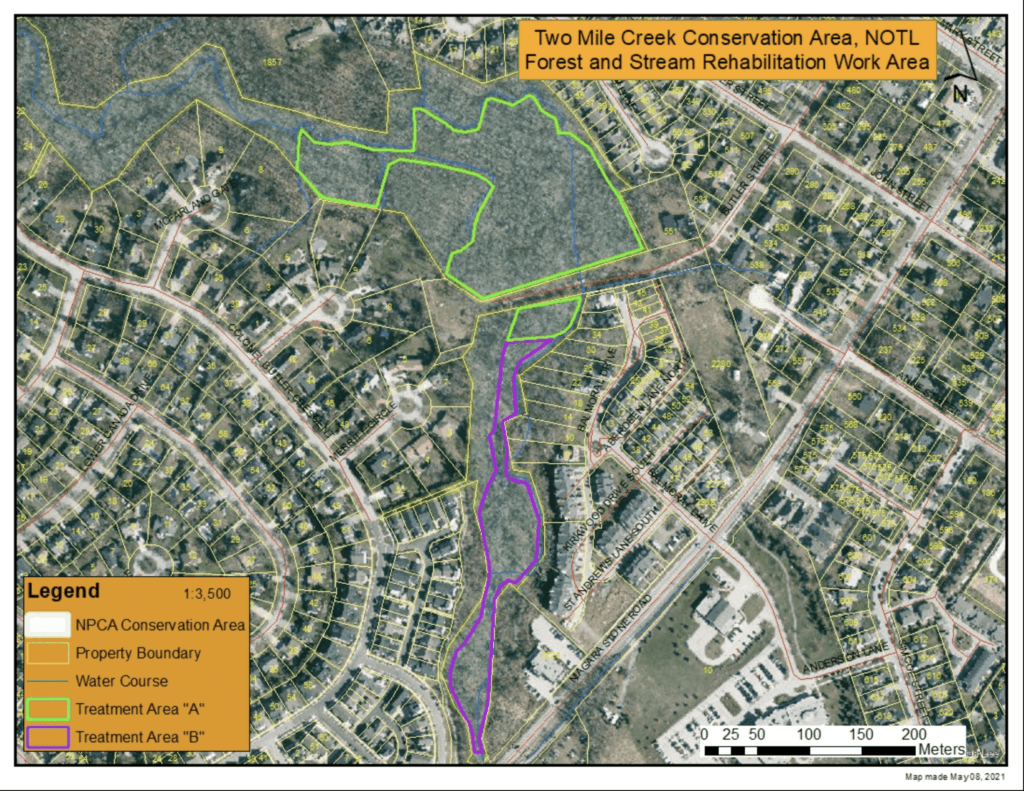
The Niagara Peninsula Conservation Authority (NPCA) started July 5, 2021, with forest and stream rehabilitation at the Two Mile Creek Conservation Area in Niagara-on-the-Lake that is accessed at the end of Butler Street and from the Garrison Village neighbourhood. The work will remove dead ash trees and creek debris, plant new native trees to provide ecosystem diversity and ensure trail user safety.
The operation will begin in Treatment Area “A” and Treatment Area “B” (see map), with the objective of a “stand conversion” from the dominate ash tree forest cover to a young forest of mixed tree species through subsequent reforestation activity.

Ash tree mortality was caused by the Emerald Ash Borer, a shiny emerald coloured beetle that was first noticed in North America in 2002 and in Niagara-on-the-Lake in 2012. Larvae of this invasive species feed just beneath the bark of ash trees and disrupt the movement of water and nutrients. Once signs and symptoms of infestation develop, the tree is in irreversible decline. Once dead, ash trees tend to fall apart, dropping bark and dead branches, and either fall over or snap halfway up the trunk within four years.
“A thorough assessment of the Two Mile Creek site indicated that within the treatment areas, the tree composition is dominated by green ash in the overstory and Manitoba maple in the understory,” says Dan Drennan, Watershed Forester at NPCA. “There is no significant natural regeneration of non-ash native species that could replace the dying and dead ash trees, and Manitoba maple is not a species the NPCA wants to dominate the site. There are scattered groups of willow that will be retained as much as possible.”
The timing of the tree-clearing operation coincides with a period of time where in-stream work can occur with minimal impact to bird nesting season and outside of spring and fall fish-spawning periods. These months tend to be the driest in the Niagara region, with ideal conditions to minimize damage to the site, including that of gravestones or heritage features. A third-party ecologist has assessed the site ahead of the tree clearing and has identified trees to be retained because of bird and bat habitat features such as cavity nests.
“As part of the forest and stream rehabilitation work, the majority of the dead ash trees and invasive Manitoba maples will be removed using equipment that will fell and mulch the dead trees, leaving the organic material on site,” Drennan says. “Fallen trees and logs in the watercourse will be removed in a safe and controlled manner, to improve flow and address concerns about large creek debris and flooding.”
The ash tree forest cover will be replaced by native deciduous and coniferous trees appropriate to the site conditions and native to seed zone 37. These will be replanted on the site to encourage the re-establishment of a healthy, resilient and diverse ecosystem that will support a variety of wildlife and improve the overall water quality in Two Mile Creek. The NPCA will launch a public engagement initiative and volunteer call out to welcome area residents in these replanting activities this fall or in spring of 2022.
“The timing of this initiative correlates well with other Town efforts to remove ash trees and improve upon the overall tree canopy and quality of trees in Niagara-on-the-Lake,” says Brett Ruck, Irrigation and Drainage Superintendent at the Town of Niagara-on-the-Lake. “We hope residents will embrace this endeavor as we collectively look forward to the rejuvenation of this site.”
Work is expected to take approximately three to four weeks. The Two Mile Creek Conservation Area, approximately 4 hectares (10 acres), will be closed to the public during this time.
Various forestry equipment will be used for the tree clearing operation and nearby residents and businesses should expect noise between the hours of 7 a.m. and 5 p.m., Monday to Friday.
All other conservation areas in the Niagara Peninsula watershed remain open and continue to provide natural spaces for safe, local day-use visits for outdoor, passive recreation. To learn more about these parks and the services and amenities available at each park, visit https://npca.ca/parks-recreation/conservation-areas.

Leave a Reply